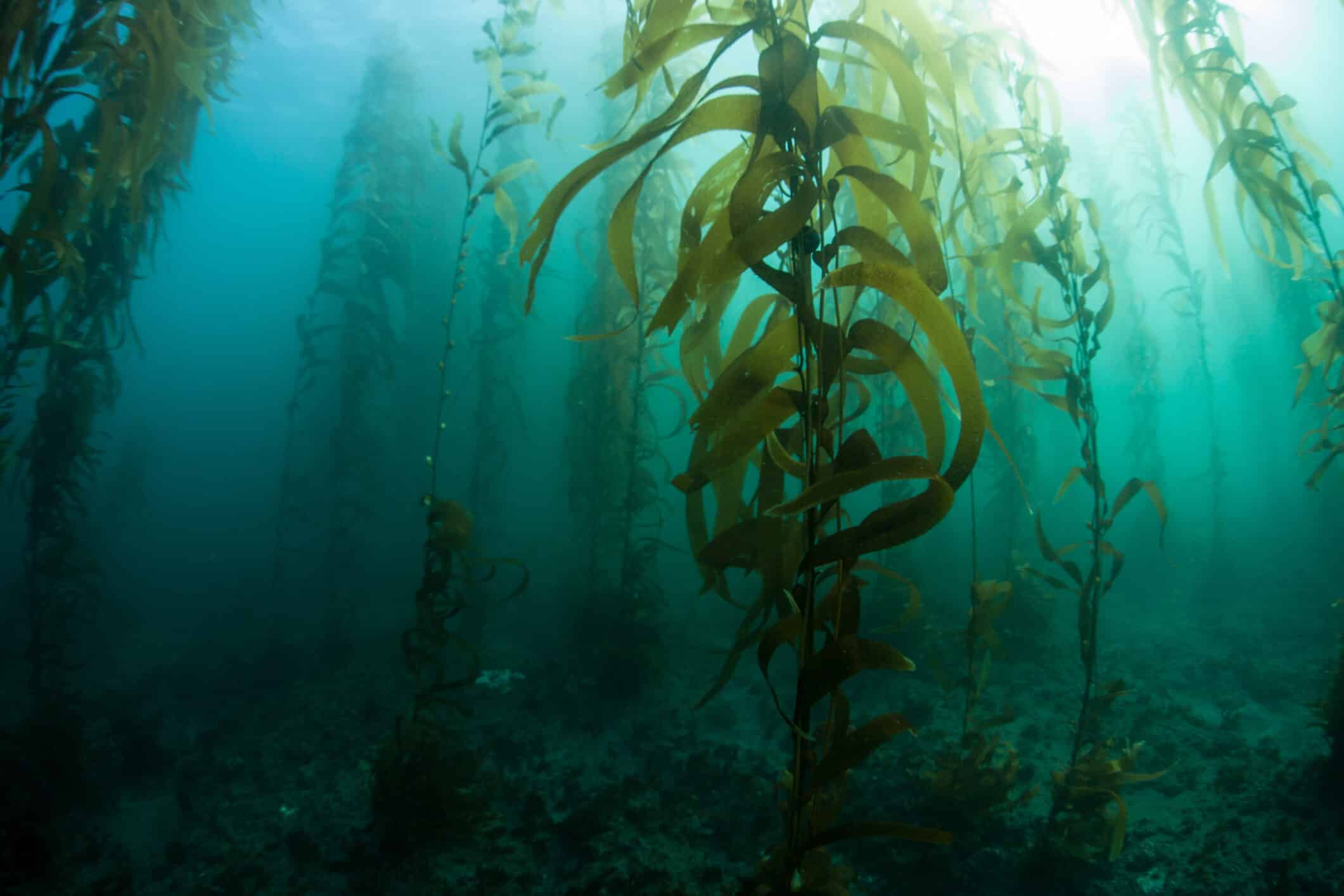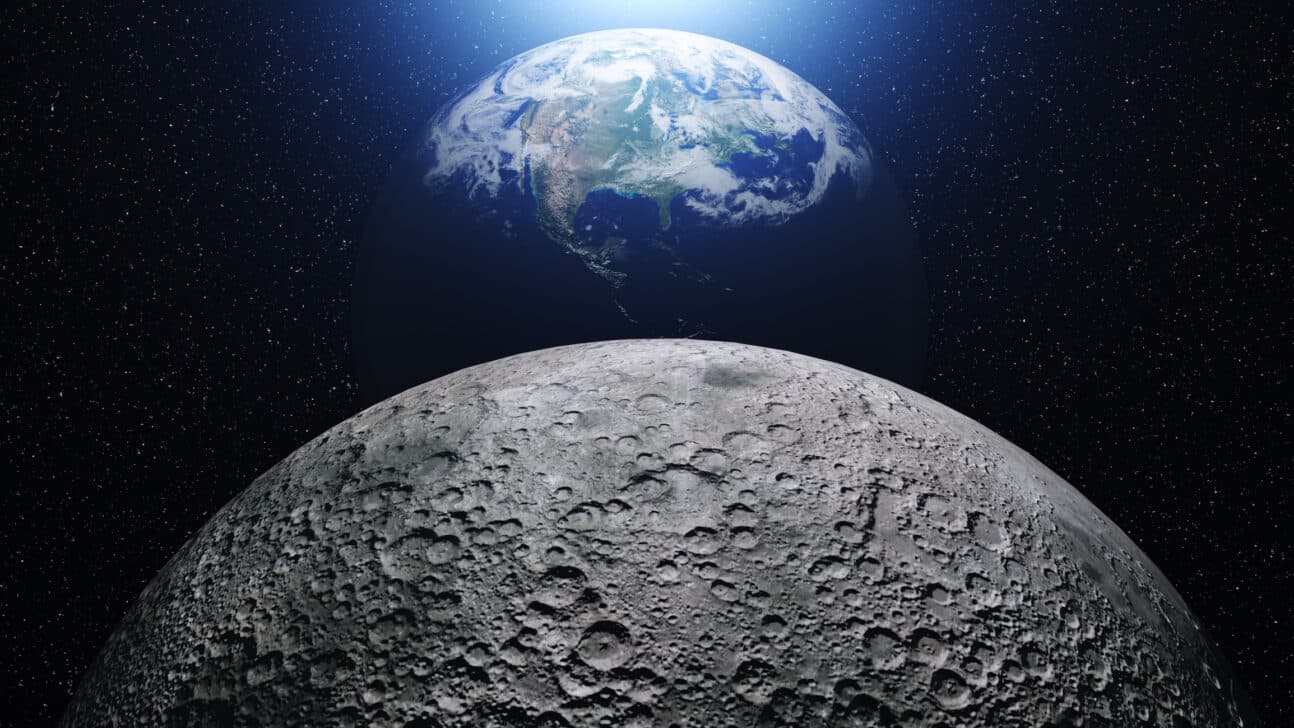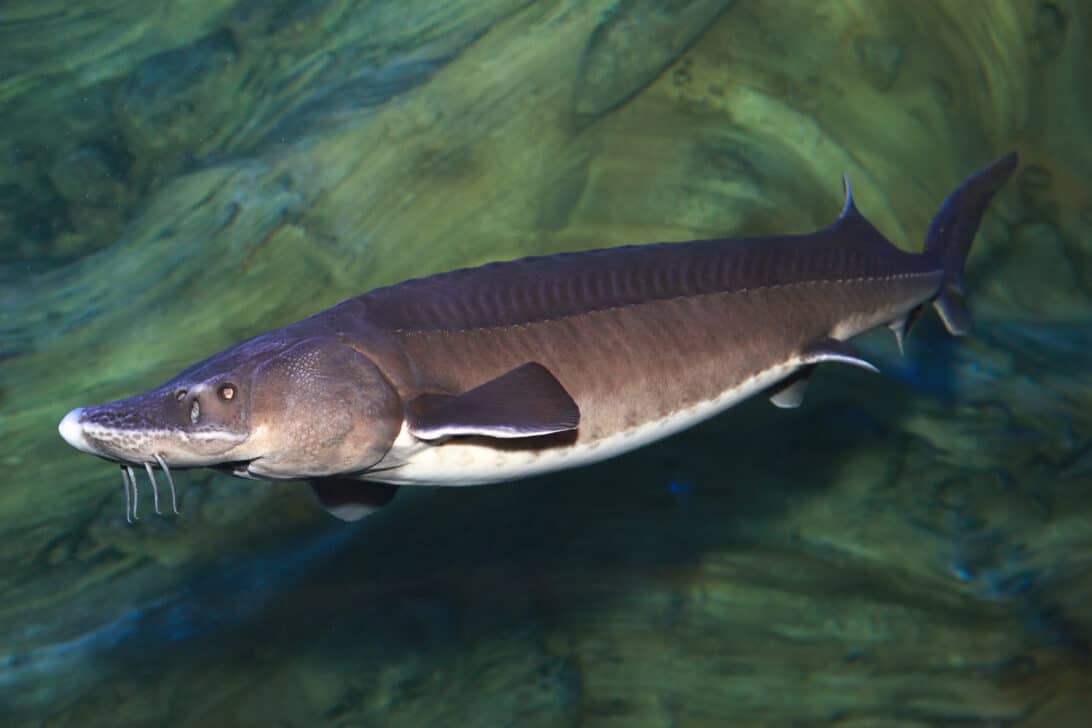Many eyes are now turning to the sea as we hunt for solutions to global problems like climate change, biodiversity loss and unhealthy diet. Water covers more than 70 per cent of the planet, much of it teaming with thousands of species of algae, which is proving to hold a magic bullet to tackle many of these issues.
There are two types of algae; microalgae, also called phytoplankton, and their larger cousins the macroalgae, otherwise known as seaweed. Each type has its own unique properties, but they both have the potential to reduce the amount of carbon dioxide in circulation and can be used as a partial replacement for some land-based crops. Algae is also incredibly versatile as an ingredient in things such as packaging, replacing or reducing the use of plastic and paper.
Tasty and healthy
Anyone who enjoys sushi knows how delicious a good nori wrap can be. And Kombu, which is a dried seaweed, is turning up in everything from soups to cakes on the Great British Bake Off.
And the good news is that seaweed is also really good for you.
The heart-friendly Omega 3 oils that people think come from eating fish actually come from the algae that the fish eat. Algae is also a great source of protein, vitamins and minerals.
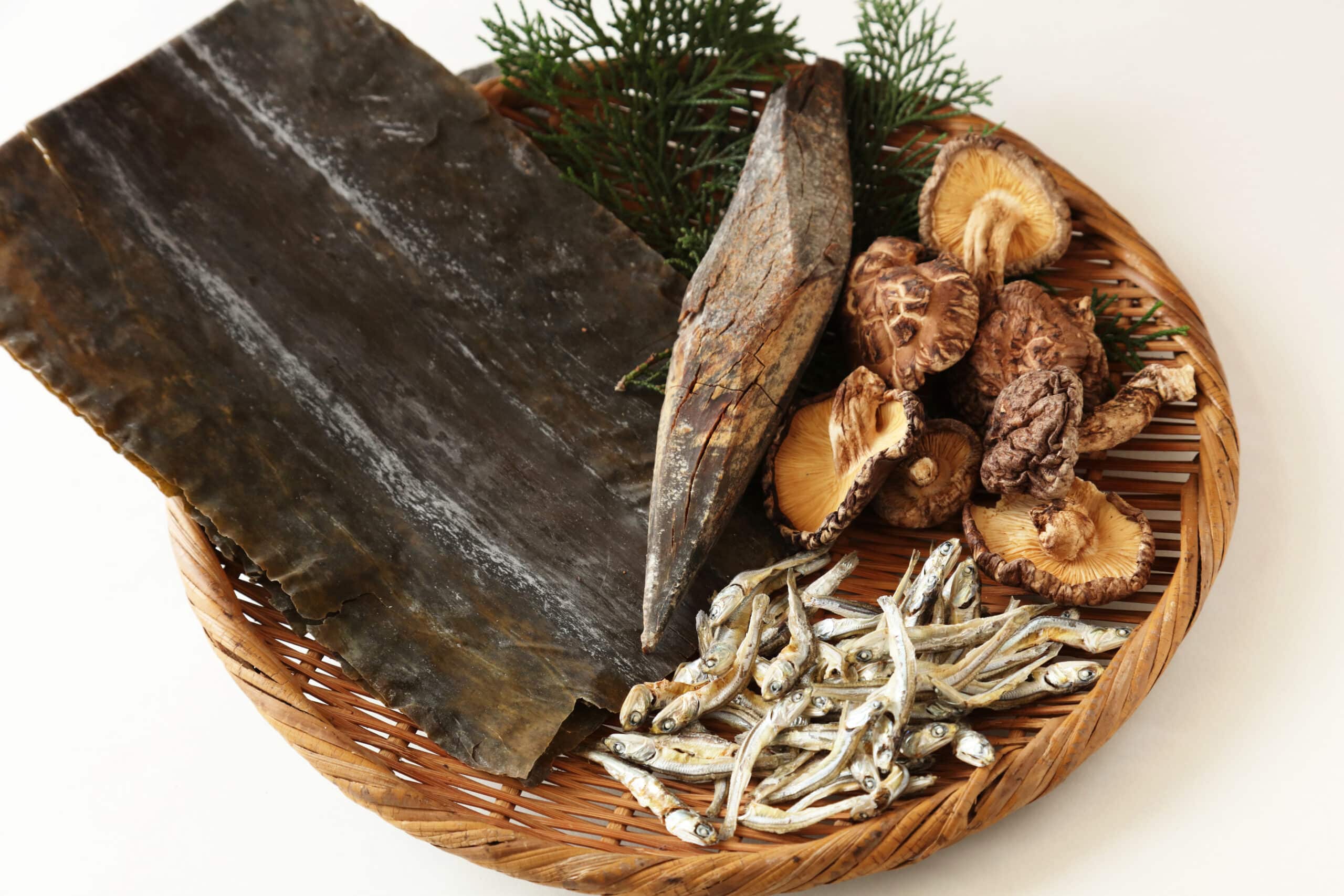
Kombu is a key ingredient in Japanese staple soup Dashi. Picture from Key05 on iStockPhoto
Ronald Osinga, from the Wageningen University in the Netherlands, has suggested that if we grew farms of sea lettuce, a form of algae, of 180,000 square kilometres (roughly the size of Cambodia, or half the size of Japan) this could provide enough protein for the entire world.
A number of start-up food businesses are also using seaweed as a core ingredient. One example is BettaF!sh, a Berlin-based company that produces a vegan tuna alternative called Tu-nah, that’s already sold in Aldi stores across Germany. Unlike many other non-animal protein alternatives, it doesn’t use wheat or soya beans, but is based on fava beans and seaweed, which provides the from-the-sea flavour.
Venture capital firm Pale Blue Dot is an investor in BettaF!sh. Their General Partner, Heidi Lindvall, explains the potential they see: “We believe there is an unexplored food ecosystem in the ocean right now, and the world is just beginning to wake up to its nutritional, social and environmental benefits. Seaweed has the ability to truly change the way we eat, and BettaF!sh are at the frontier of developing products with taste and sustainability at the core. Replacing tuna is just one goal in their vision to restructure food production systems.”
A carbon commando
When it comes to reducing CO2, algae are natural ninjas.
Microalgae drive what has been called the “biological carbon pump”, which is responsible for sequestering about 10 gigatons of carbon in the deep ocean every year. They do this through photosynthesis, consuming carbon dioxide on a scale equivalent to forests and other plants on the land. Some of this carbon is carried to the deep ocean when they die, and some is carried to different parts of the ocean as phytoplankton are eaten by sea creatures, which in turn reproduce, generate waste, and die. A perfect circularity.
Australian environmentalist asks whether seaweed can help curb global farming?
So, could it be a good idea to try, artificially, to encourage the growth of microalgae in our oceans? Well, perhaps. It has been suggested that adding substances like iron and rock dust to the water is an effective way to encourage microalgae growth, resulting in even more CO2 reduction. John Martin of the Marine Observation Station went so far as to say: “If you give me half a tanker of iron, I can return you an ice age.”
However, nature craves balance and the over-abundance of phytoplankton can have very bad consequences for the ocean biodiversity around it. When one species of algae reproduces extremely rapidly, it can form algae blooms, which can have a devastating impact on many types of marine life.
Microalgae can also be used to make biofuels, enabling a partial move away from fossil fuels. But producing them in enough quantities to be a viable alternative isn’t practical. Speaking to the Wall Street Journal earlier this year, Professor Kevin Flynn from the Plymouth Marine Laboratory explained: “Meeting just 10% of Europe’s fuel demand with unmodified algae would require flooding three Belgiums in more than 7 inches of water while using 50% of the fertilizer used for European agriculture.”
Seaweeds can also step up to the carbon reduction plate. They are good at capturing CO2 because they generate more organic material than gets used up within their ecosystems. Globally, wild seaweed sequesters about 173 million tons of carbon every year and farmed seaweed could potentially trap another 6.8 million tons of carbon (equivalent to 2.48 million tons of CO2). It also grows around 30 times faster than land-based crops, so positive carbon impacts are achieved more quickly.
And if you still don’t think that algae are pulling their weight in the climate fight, there’s another ingenious way they are helping to reduce emissions. Adding a dose of red seaweed – specifically Asparagopsis Taxiformis – to cattle feed reduces the amount of methane they produce, by inhibiting the enzymes that produce methane in the cows’ stomachs. Like a kind of anti-fart powder.
Ermias Kebreab, lead author of a recent University of California study, explains: “We saw a reduction of over 80% or more when adding just one or two ounces of seaweed. That was a big surprise to us. Reducing methane could help us in the short-term reverse some of the climate effects. It gives us a chance to slow down global warming.”
Feeding cows seaweed can reduce their methane output. From VOA News.
A Sustainable Material
Like the rest of Asia, Indonesians use a lot of food and sauce sachets, which many of the large consumer products groups sell because they allow poor customers in developing countries to buy small amounts of products they would not otherwise be able to afford. These products often have health or nutrition benefits, but the sachets can’t be recycled.
Indonesian businessman David Christian decided to tackle the problem, using seaweed.
“The government has started to take it seriously, but we just don’t have the infrastructure to deal with all our waste,” Christian said.
His solution was to start a company, Evo & Co, making sachets made from seaweed. “People are always talking about the plastics problem in a heavy way. I wanted to do it in a more fun way and there are a lot of advantages. We have a lot of seaweed in Indonesia, we’re the largest producer in the world.
“You don’t use land so it doesn’t contribute to deforestation, and it absorbs CO2, so it helps fight climate change. And seaweed grows really fast – you can harvest it every 45 days,” he added.
The company has now expanded its product base to include many other sorts of food containers and earned many awards for sustainability and entrepreneurship along the way.
But it’s not only start-ups that are seeing the potential of seaweed.
DS Smith, the FTSE100 packaging company, is exploring how seaweed fibres can be used as a raw material in paper and packaging products.
The company has announced its intention to use seaweed across its packaging network as an alternative fibre source to wood. Following initial testing, the company is also exploring the potential of seaweed to play a significant role in the “purge on plastics” by acting as a barrier coating to replace petroleum-based packaging used to protect many foodstuffs.
Like Evo & Co, DS Smith is exploring the use of seaweed fibres in a range of packaging products such as cartons, paper wraps and cardboard trays.
Thomas Ferge, Paper and Board Development Director at DS Smith, said: “As a leader in sustainability, our research into alternative raw material and fibre sources has the potential to be a real game changer for our customers and consumers who increasingly want products that are easy to recycle and have a minimal impact on the environment.
“Seaweed is one of the many alternative natural materials we’re closely looking at, and while most people probably associate it with the beach or as an ingredient in sushi, it could have some exciting applications for us to help create the next generation of sustainable paper and packaging solutions.”
A Growing Industry
So it’s really no surprise that the seaweed farming industry is burgeoning right across the world.
Starting commercially in Asia, it’s now expanded across the planet and, according to The Food And Agriculture Organization, is worth more than $6 billion annually, although there has been some levelling off in its stratospheric growth since 2018.
The European seaweed industry alone is predicted to be worth almost £8billion by 2030, generating some 115,000 jobs.
The cost of reducing carbon through seaweed farms is also reducing. Current estimates are a median cost per ton of $543, compared with $600-$800 per ton through Orca, the world’s largest plant for sucking CO2 out of the atmosphere.
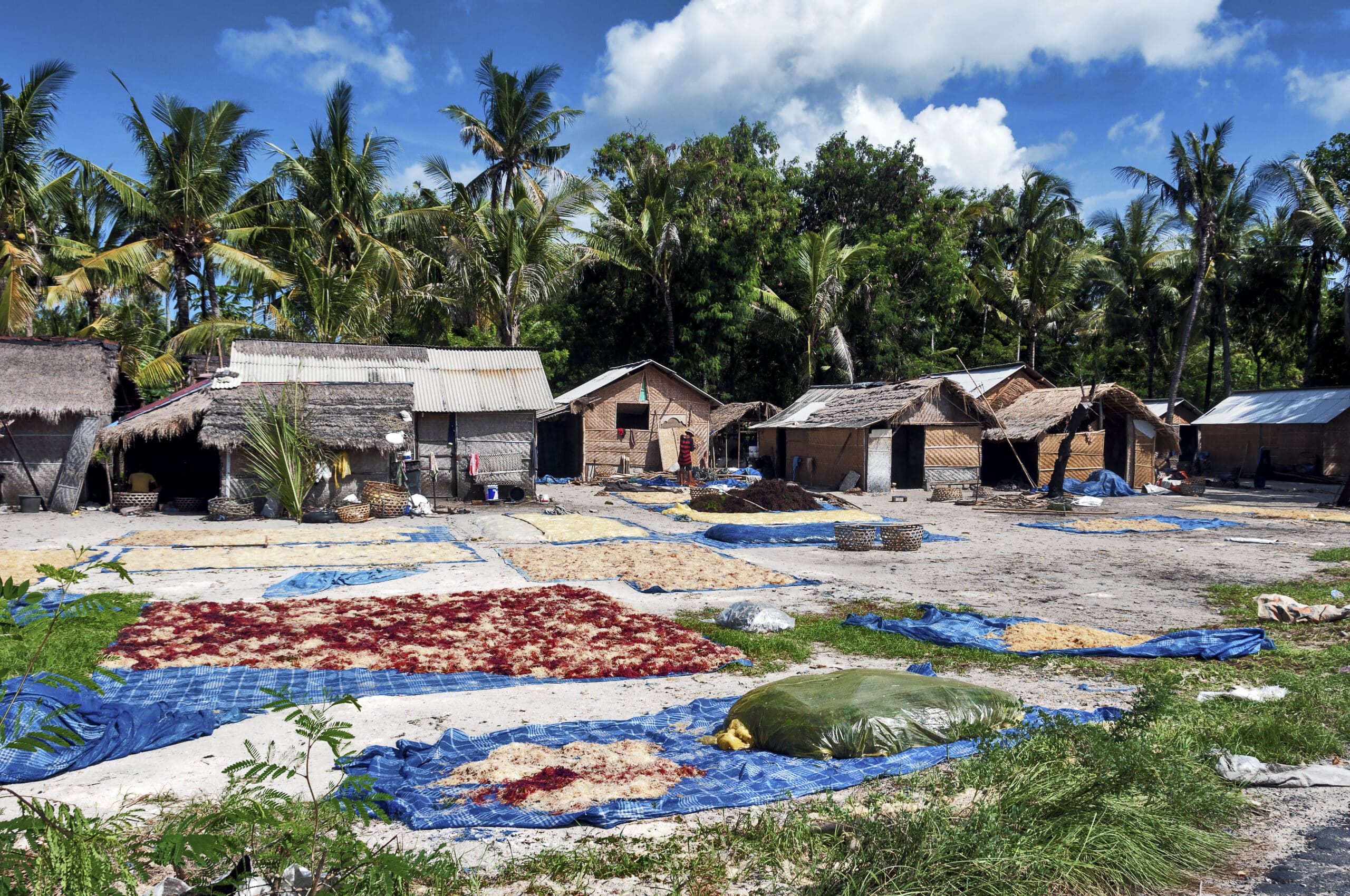
The people of Nusa Lembongan island in Bali, Indonesia, specialise in the cultivation of algae in creating true algae farms. Picture BTW Images, iStockPhoto.
Want to become a seaweed farmer?
While the opportunity is clearly huge and growing, you can’t just set yourself up as a seaweed aquaculturist.
There are different regulations and restrictions in place in each country, which can be very complex to navigate, but an organisation called Seaweed for Europe has produced a handy guide if you want to set up in Europe.
In the USA, regulations are up to the state and vary widely and states with applicable laws include Alaska, California, Connecticut, Maine, Massachusetts, New Hampshire, New Jersey, New York, Oregon, Rhode Island, and Washington. At the federal level, FDA guidelines apply only to seaweed grown as a food product.
Things get even more complicated and disparate if you’re looking to set up in Asia or Africa.
If you fancy setting up a farm in common waters (a long way offshore), it could be feasible without having to get national licences, but tending to your farm could prove to be virtually impossible.
So all in all, if seaweed farming is where your heart, stomach and wallet are leading you, you’re likely to encounter some choppy waters. Time to wade into the regulations, with a cold towel wrapped around your head, sipping a cup of dashi from your seaweed cup.
With thanks to Pale Blue Dot’s Head of Research and Insight Lindsey Higgins, who has committed to make available their research into a variety of growth markets. Their seaweed research is available at the company’s Notion page.
Subscribe
Sign-up to receive our newsletter
